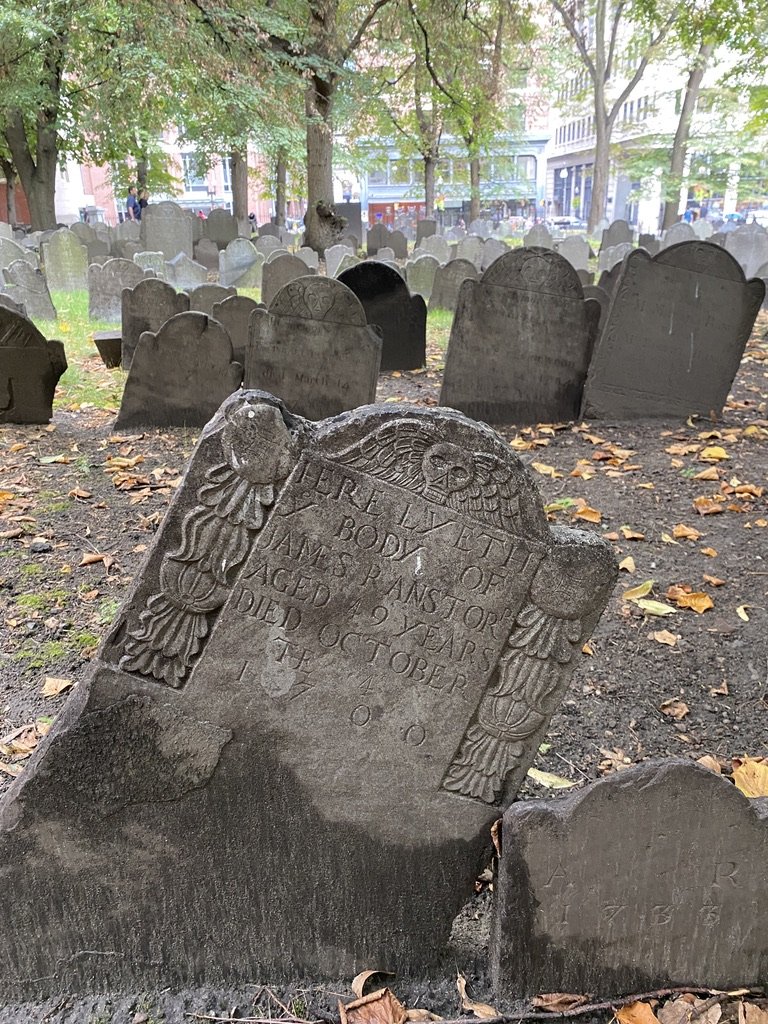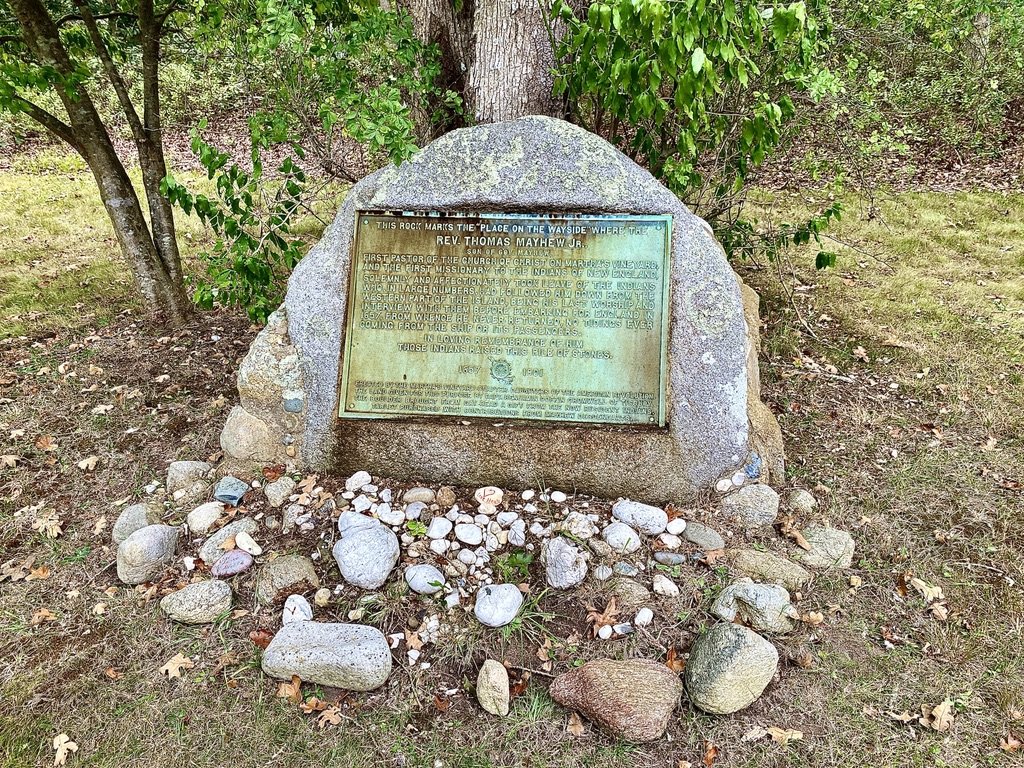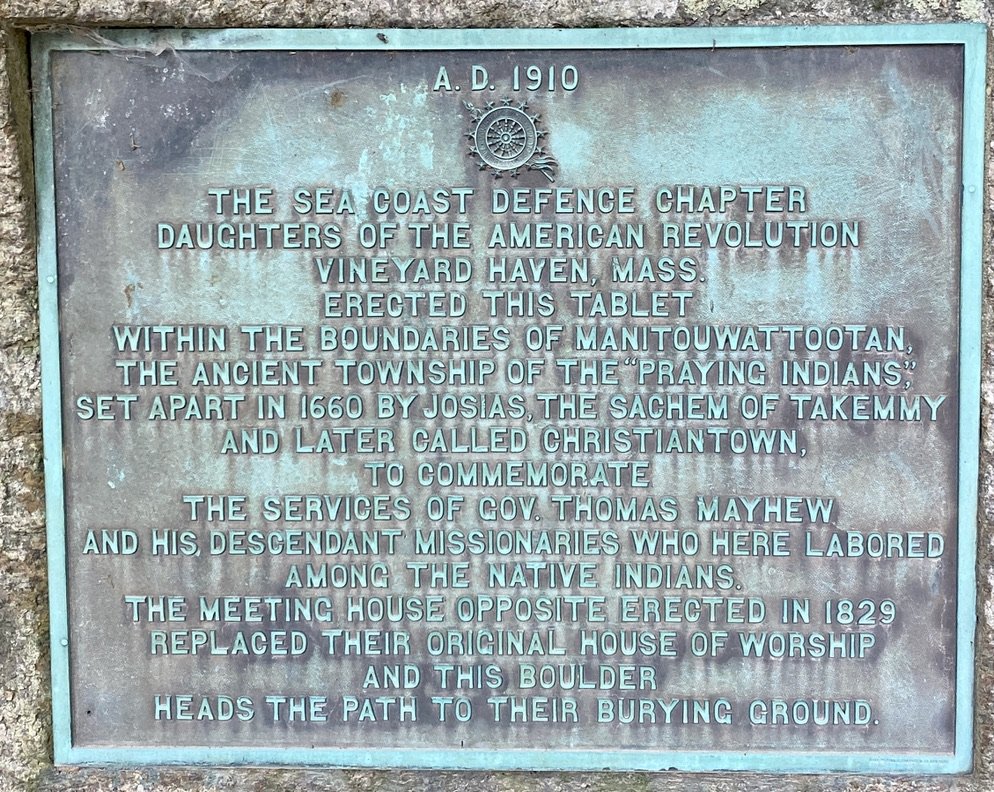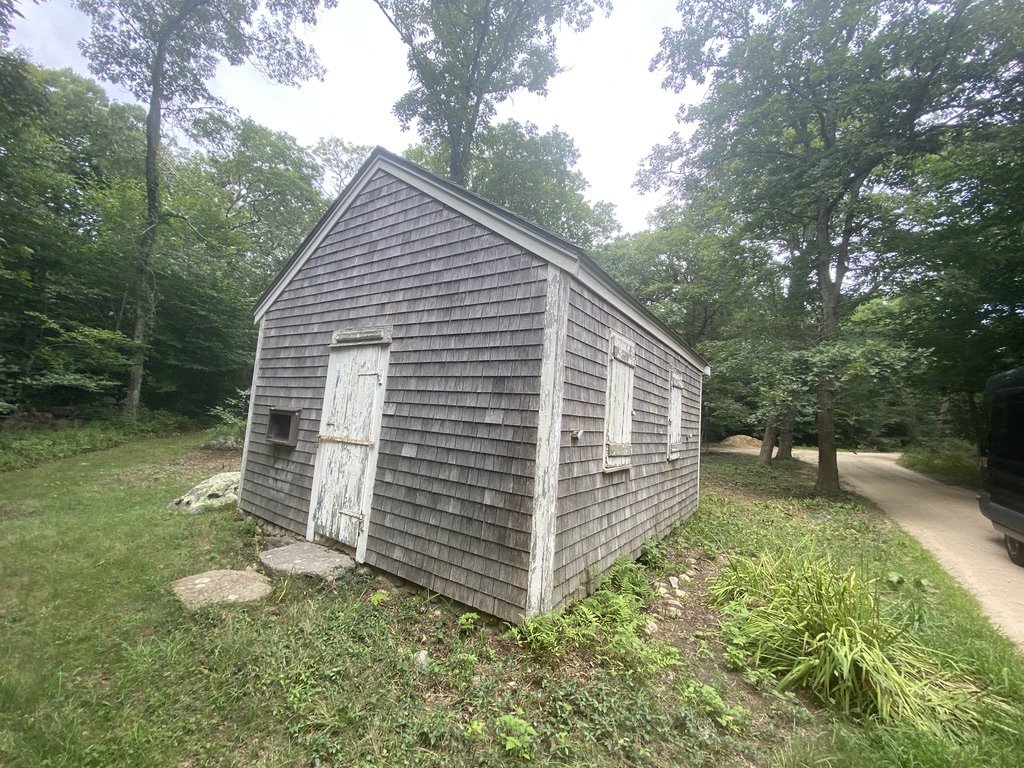My Genealogy Journey, Part 1
Nantucket harbor
I volunteered to become this generation’s family genealogist about 8 years ago when I realized that none of the previous research had been digitized. I set about untangling and inputting the handwritten and onion-skin-typed info into a family tree software program to bring their work into the 21st century. So, when I traveled to Boston, Newport, RI, and Nantucket last fall (October 2021) for a visit with friends and a class on Moby-Dick, the ancestors’ names were rattling around in my head. I knew that we had early 17th-century Puritans who settled in Plymouth, Barnstable, Martha’s Vineyard, and Nantucket, but I had no idea that it would feel so visceral for me, a book and records researcher, to stand on the soil and see the places where my ancestors had carved out a life 400 years ago.
Granary Burying Ground, Boston, MA
Possibly Peregrine White’s cradle on the Mayflower, 1620
Surprises and epiphanies started irrupting into my trip last year. The first was in Boston while on the Freedom Trail historical walking tour with our friends. We wandered into the Granary Burying Ground, and I thought to check the family tree app on my phone for ancestors buried there. I found two!—Peregrine White (1620-1704), the baby born on the Mayflower, my ancestor by marriage to Sarah Bassett (1630-1711) whose parents came over on the second pilgrim ship from Holland and England, The Fortune, in 1621; and Rev. Thomas Crosby (1634-1702), whose grandson Jonathan Crosby (1705-1782) married Hannah Bangs (1676-1739) and joined our family line. These two men and their graves are well-known but somewhat distantly connected to us. It wasn’t until Nantucket that I really felt a jolt of excitement and connection to the early history of that place.
Display at Nantucket Whaling Museum
Deed of sale for Nantucket, 1659
At the start of our Moby-Dick class, our teacher Dennis Patrick Slattery asked each of the fifteen or so participants to say what “called” them to come (à la “Call me Ishmael”). I found myself saying that my ancestors had called me. Huh? I didn’t realize it was so until I said it. The next morning the class explored the Nantucket Whaling Museum and right away, the first display had a name on the wall that rang a vague bell in my memory: Governor Thomas Mayhew, Sr. (1593-1682). I grabbed my phone and looked him up in the app. Yes! He was my 11th great-grandfather, and I already knew that he had been the first governor of Martha’s Vineyard starting in 1641. At the museum I learned that he had also been the first European to have a claim to Nantucket, which he sold to nine families in 1659 (the European founders of that place) for thirty pounds (Stirling) and “two beaver hats, one for myself and one for my wife.” The rest of the time in the museum I felt like I was in some kind of weird dream because then we heard a storyteller recount the shipwreck of The Essex and she said the 14-year-old cabin boy who survived was Thomas Gibson Nickerson. I knew that last name! (That story is for an upcoming post.) Then the movie playing in the museum theatre mentioned the mermaid legend of Captain Ichabod Paddack. That name also seemed familiar (on my father’s side). It was another ancestor (and another post)!
Now I’m on another leg of my genealogy journey: a research trip to Cape Cod, Nantucket, Martha’s Vineyard, Boston, and Shelburne and Halifax, Nova Scotia. I’m traveling with my mother, Linda-Jane Irwin (b. 1941). I’ve been “mining the Mayhew line,” researching the governor’s legacy in the Nantucket Historical Association library and visiting sites on Martha’s Vineyard. I saw the 1659 deed of sale of Nantucket. I read about his ethical treatment of the Indians, making sure they were compensated for land sales and keeping good relations with them. He learned their language and converted them to Christianity. We found the site of their old homestead in Edgartown. His only biological son Thomas Mayhew, Jr. (1620-1657) was the main preacher to the Indians on Martha’s Vineyard, and they loved him and left piles of stones at a memorial site for him after he was lost at sea en route to London. After Thomas, Jr.’s death, Thomas, Sr. kept up the chapel until his death at age 88. I was able to visit these sites on Martha’s Vineyard after reading about them in books, which vivified the events a bit more. I have opinions about the Christianizing of the Indians, but at least these Puritan ancestors tried their best for the times they lived in.
Memorial to Thomas Mayhew, Jr.
Our family line descends from Gov. Thomas Mayhew’s daughter Martha (Mayhew) Tupper (1642-1717). The way a family tree spreads in both vertical directions is fascinating, forming exponential roots and branches. Martha Mayhew married Thomas Tupper (1638-1706), intertwining the Tupper and Mayhew lines. Further lines that joined included the last names of Fish, Bassett, and Gates (all females, so these names did not continue down this branch), and then a female Tupper married an Archer, bringing that family into the tree (Elizabeth Gates Tupper 1758-1830 m. John Archer 1752-1830). His son married a Nickerson (Joseph Tupper Archer 1784-1863 m. Dorcas Nickerson 1790-1815), bringing their fascinating history into the line. Their granddaughter was Isabel Muir Archer (1839-1915), who anchors this whole Puritan immigrant line to the Irwins. She married Robert Gore Irwin (1833-1905), my mother’s paternal great-grandfather, hence her last name. There must be so many thousands alive today who can claim Gov. Thomas Mayhew, Sr. as their direct 11th great-grandfather. I’d be interested in meeting them and comparing notes and experiences, especially if they’re amateur genealogists like me.
Isabel Muir Archer, the “anchor” to the Puritans in our tree
Plaque commemorating Mayhew missionary work
Mayhew Chapel, Martha’s Vineyard, Indian Hill Road
Site of Mayhew homestead, 79 S. Water Street, Edgartown, Martha’s Vineyard












